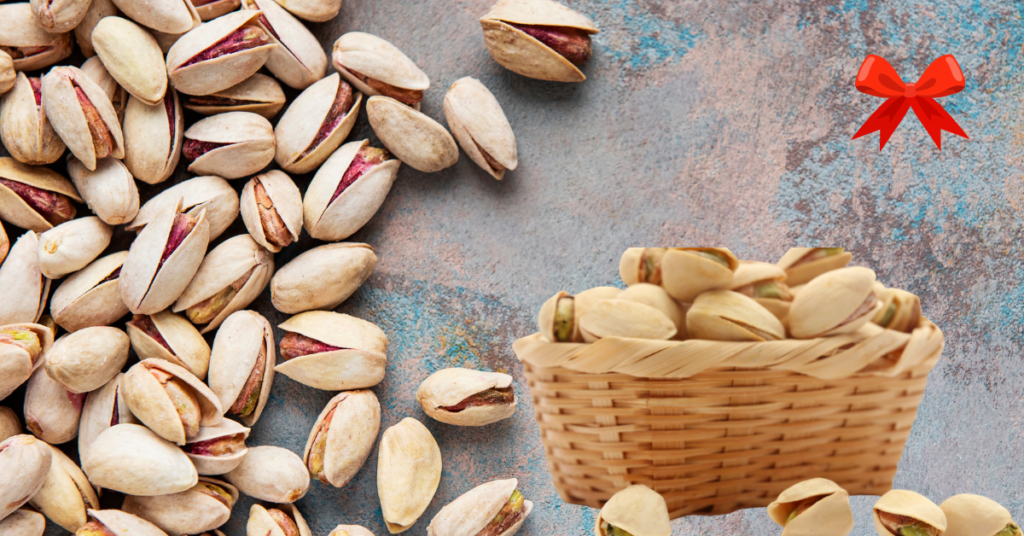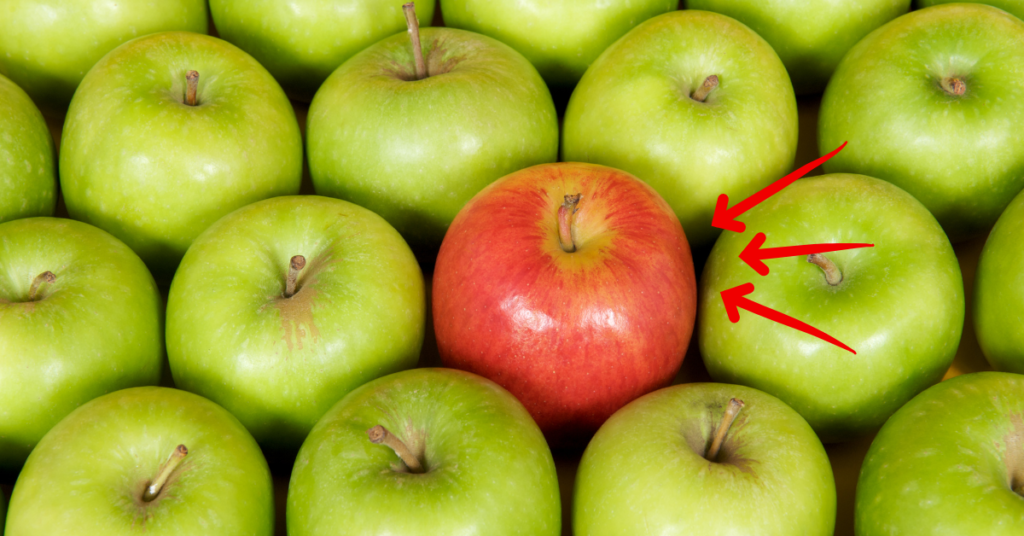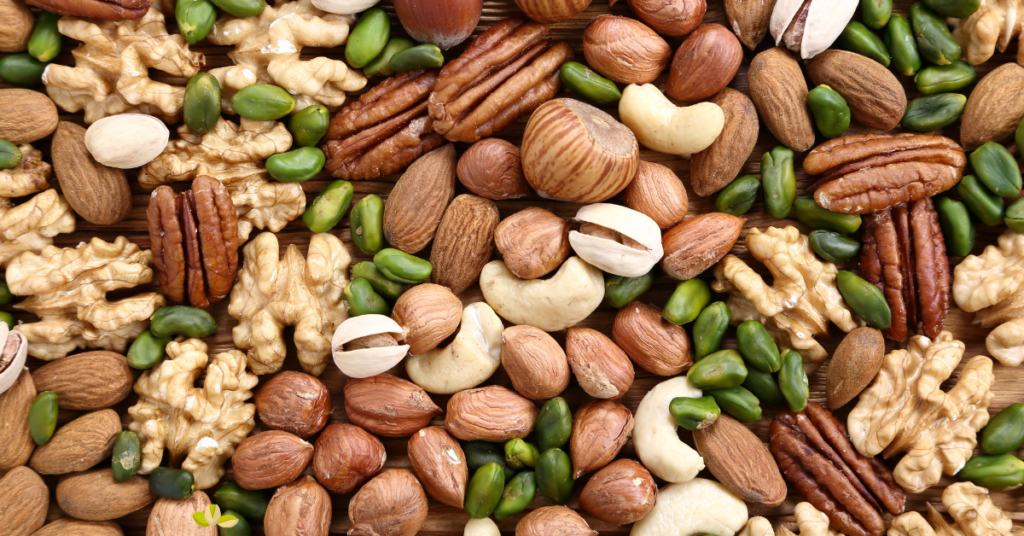Pistachio Nuts Used to Be Red? If you’ve ever contemplated why pistachio nuts are utilized to be ruddy, you are no longer by yourself. This inquisitive shade has captivated numerous, and it has a fascinating record hooked up in both conventional and not unusual feel. In this article, we’ll inspect the motives behind the rosy tint of pistachios in the past, the advancement of pistachio getting ready, and the advanced styles in pistachio color.
The Chronicled Red Colour of Pistachio Nuts

Pistachio nuts, known for their particular flavor and flexibility, were once commonly seen with a ruddy external shell. This rosy tone was not a common characteristic of the nut but may have resulted from the preparation strategies utilized in prior times.
The chronicled ruddy color of pistachio nuts is an intriguing theme that intertwines rural hues, territorial conventions, and customer inclinations. The rosy tone frequently associated with pistachios is not characteristic of the nut itself but may be an item of verifiable hues related to its preparation and marketing.
- Origins and Characteristic Colo: Pistachio nuts, initially local to East and Central Asia, have a characteristic color that ranges from beige to pale green, depending on their readiness and preparation. The nut’s shell, in any case, can shift in color, and usually, pistachios have a light, beige shell that is lean and fragile.
- Traditional Handling: Verifiable pistachios were handled and expended in the districts where they were developed, such as Persia (modern-day Iran), Turkey, and parts of the Mediterranean. In these locales, pistachios were frequently eaten new, and their characteristic color was not changed altogether. Their handling strategies evolved when pistachios began to be sent out more broadly, especially to Western markets.
- Introduction of Ruddy Colo: The hone of coloring pistachio shells ruddy started in the late 19th and early 20th centuries, fundamentally in the Joined together States. This alters was driven by a few factors:
- Protecting Against Harm: Pistachios are gathered by hand, and their shells can become tricolored or discolored during preparation and shipping. Processors began coloring the shells with ruddy or orange tints to make the nuts appear more outwardly engaging and uniform. This hone made a difference in covering imperfections or blemishes that might have happened during dealing with and shipping.
- Consumer Offer: As pistachios became more prevalent in Western markets, especially in the joined-together States, the shining ruddy color made a difference, making a particular appearance that set them apart from other nuts. The distinctive ruddy shells became a showcasing apparatus, making the nuts more eye-catching and important to shoppers. It, too, gave an impression of freshness and quality.
- Cultural Impacts: In a few societies, the color ruddy is related to great fortune, celebration, and essentials. By coloring pistachio shells ruddy, processors may have accidentally tapped into these social affiliations, improving the nuts’ offer in markets where such intentions are significant.
- Transition Absent from Ruddy Colo: In later decades, a move has been absent from utilizing counterfeit colors in pistachio preparation. This alter reflects a broader drift towards more shared and health-conscious buyer inclinations. Present-day preparation methods have made strides, decreasing the requirement to cover flaws with color. Also, mindfulness has been developed around the potential well-being impacts of manufactured nourishment dyes.
Key takeaways: Pistachio Nuts Used to Be Red?
- Chronicled Hone: In the past, pistachio nuts were colored ruddy to cover up flaws and stains on the shells, which were more common due to the collecting and preparing strategies of the time.
- Reason for Colo ring: The color made a difference, veiling the discolorations and flaws that may make the nuts less engaging to buyers. This hue was particularly predominant in the 1960s and earlier.
- Shift in Hones: The need to cover blemishes decreased as preparation innovation progressed and more modern collecting strategies were developed. This led to a move away from utilizing dyes.
- Current Patterns: Pistachios are ordinarily sold in their common colour, reflecting headway in progress in nut preparation and ann for more characteristic and unadulterated products.
- Consumer Inclination: The move away from ruddy color was driven by changing buyer inclinations for characteristic nourishment, which were exacerbated by the suspension of the hone in numerous places.
The Conventional Handling Method
In the past, pistachios were frequently collected with their shells still intaglio and, at that point, colored ruddy. This was done utilizing a combination of standard and manufactured colors. The hone of coloring pistachios ruddy had a few purposes:
- Aesthetic Request: The ruddy color made the nuts more outwardly engaging. At a time when nourishment introduction was pivotal, a dynamic color may have made the item more alluring to consumers.
- Masking Blemishes: The ruddy color helped cover any defects or flaws in the shells. Pistachios are collected in huge amounts, and in some cases, the shells can be discolored or harmed. The rosy color was a corrective settle to guarantee that each nut looked pristine.
- Cultural Hones: In a few societies, the rosy color was associated with great luck and prosperity. By coloring the nuts, benders respond to these social inclinations and make their items more desirable.
The Move from Red to Common Colour

As the pistachio industry advanced, so did the strategies for handling and showing these nuts. A few components contributed to the decay of the ruddy coloring practice.
Moving from ruddy to standard color frequently means moving from manufactured or colored tones to more boa-fife, normal tones. This can reflect a move towards sup portability, realness, and grasping unique magnificence. It highlights a developing inclination for characteristic items and a lessening in engineered or chemically modified things. This slant adjusts with broader developments in Eco-consciousness and a return to conventional aesthetics. Generally, it speaks to a craving for virtue and veritable qualities in different contexts.
Advancements in Gathering and Processing
Certainly! Headways in gathering and handling advances have affected farming and nourishment generation. Here are a few key developments:
Harvesting
- Automation and Mechanical technology: Cutting-edge gathering depends increasingly on robotised apparatus and mechanical technology. These innovations can proficiently choose natural products, vegetables, and grains with exactness and decreased lobar costs. For example, automated collectors can choose fragile crops like strawberries without harming them.
- Drones and Sensors: Rambles equipped with sensors and cameras can screen trim well-being, distinguish bugs, and survey soil conditions from the discussed. This information helps agriculturists make educated choices about when and how to harvest.
- GPS and Accuracy Agribusiness: GPS innovation permits exact route and area mapping, improving the effectiveness of gathering gear. This innovation guarantees that crops are gathered at ideal times and diminishes waste.
Processing
- Advanced Sorting and Evaluating: Computerised sorting and evaluating frameworks utilize machine vision and counterfeit insights (AI) to classify delivery based on estimate, color, and quality. This diminishes manual labor and increases the precision of item grading.
- Enhanced Conservation Strategies: Advancements in conservation incorporate strides in refrigeration strategies, vacuum fixing, and altered air bundling. These strategies amplify the shelf life of perishable merchandise and maintain their quality.
- Sustainable Preparing Strategies: Modern preparing advances center on sup portability, such as diminishing vitality utilization and squandering. For illustration, water-reusing frameworks for preparing plants, mizzen water utilization, and energy-efficient apparatuses reducefootprinfootprintshnology: Biotechnology advances, such as protein innovation and hereditary adjustments, improve preparation proficiency and item quality. Chemicals can be used to break down components more proficiently, whereas hereditary adjustments can produce crops with alluring handling traits.
- Improved Gathering Strategies: Present-day collecting strategies have made strides. Pistachio trees are presently gathered more proficiently, and the nuts are less likely to have defects that require concealment. This decrease in the need for corrective improvement made the ruddy color less necessary.
- Quality Control: With advancements in quality control, pistachio processors can guarantee that the nuts are of high quality without the need for extra coloring. Buyers nowadays are more interested in the ordinary state of their nourishment, and there is a developing demand for negligibly handled products.
- Health and Security Directions: As food security directions became stricter, engineered colors in food items confronted expanded investigation. The ruddy colors used in pistachios were regularly engineered, and there was growing concern about the potential well-being impacts of counterfeit colors. This drove a move towards common and more secure alternatives.
Changing Customer Preferences
Changing customer inclinations allude to the shifts in what individuals need or esteem regarding items and administrations. These changes can be driven by different variables, including:
- Technological Progressions: Modern advances regularly solve unused needs or make existing items more engaging. For example, the rise of smartphones changed how individuals communicate, shop, and engage.
- Cultural Patterns: As societal values advance, so do customer inclinations. For occasion, developing mindfulness of natural issues has driven numerous shoppers to favor maintainable and Eco-friendly products.
- Economic Conditions: Financial variables can impact buyers’ priorities. Amid financial downturns, individuals may center on esteem for cash, whereas in times of success, they might spend lavishly on extravagant items.
- Social Media Impact: Social media stages shape suppositions and patterns, frequently driving changes in what individuals discover alluring. Influences and viral patterns can rapidly move customer behavior.
- Health and Wellness Patterns: Expanding mindfulness of well-being and wellness has driven higher requests for items that advance a more beneficial way of life, such as natural nourishment and fitness-related items.
- Demographic Changes: Diverse age groups, ethnicities, and ways of life can drive shifts in inclinations. For example, millennials and Gen Z regularly prioritize distinctive values compared to more seasoned generations.
- Natural and Natural Patterns: In later decades, there has been a noteworthy move towards normal and natural nourishment. Buyers have become more aware of the fixings in their food and are progressively choosing items that are free from counterfeit added substances. This slant has affected the pistachio industry, which has stopped utilizing ruddy dyes.
- Transparency and Realness: Advanced buyers esteem straightforwardness and realness in their food choices. Characteristic pistachios, without included colors, align with these values. The move towards regular pistachio nuts reflects a broader drift towards straightforwardness and genuineness in food labeling.
Table for Pistachio Nuts Used to Be Red?
| Aspect | Details |
|---|---|
| Historical Context | In the past, pistachio nuts were often dyed red. |
| Purpose of Red Dye | The dye was used to mask blemishes and imperfections on the nuts’ shells. |
| Type of Dye Used | The dye was usually an artificial colouring, such as Red #40 or other similar dyes. |
| Time Period | Predominantly used from the 1950 s to the 1980 s. |
| Reason for Change | The practice decreased due to health concerns, consumer preferences, and changes in nut processing technology. |
| Current Practice | Today, pistachios are generally left in their natural colour, which is beige or light brown. |
| Consumer Preferences | Modern consumers prefer natural foods without artificial additives. |
| Health and Safety | There were concerns about the safety of artificial dyes, leading to changes in regulation and consumer habits. |
The Cutting edge Pistachio Nut: Grasping Characteristic Beauty

Today, pistachio nuts are regularly found in their standard beige color. This move reflects changes in preparing strategies and customer preferences.
The cutting-edge pistachio nut grandstands nature’s class with its dynamic green tint and one-of-a-kind surface. Its everyday excellence is celebrated in culinary manifestations, upgrading dishes with flavor and visual appeal. The nut’s charming, sporadic shell and sensitive, buttery taste make it a favorite in gourmet cooking. Grasping its standard shape, the pistachio adds a touch of modernity and grittiness to any introduction. By increasing in value its inherent excellence, we honor the craftsmanship of nature in our culinary experiences.
Natural Color and Quality
The setting is imperative when discussing “characteristic color and quality,” as it may relate to different areas like materials, gemstones, or nourishment. Mainly, characteristic color alludes to the inborn tones and shades found in materials or items without counterfeit modification. Quality, on the other hand, frequently relates to the overall standard or greatness of the item, which can be affected by variables such as virtue, craftsmanship, and durability.
In materials, the standard color might allude to the shades of strands that haven’t been colored, whereas quality would include the surface, quality, and life span of the texture. For gemstones, characteristic color alludes to the gem’s unique tone as it happens in nature, and quality might include variables like clarity, cut, and carat weight.
- Enhancing Normal Appearance: Advanced pistachio preparation involves upgrading the nuts’ normal appearance. This includes cautious sorting and handling to guarantee that the nuts are outwardly engaging without the required manufactured coloring.
- Emphasis on Flavour and Freshness: With the center moving absent from manufactured colors, the accentuation in pistachio handling has moved towards protecting the nut’s flavor and freshness. This approach guarantees that the nuts hold their typical taste and wholesome benefits.
- Environmental Contemplation: The move absent from engineered colors reflects developing mindfulness of natural issues. Manufactured colors can have unfavorable natural impacts, and the move to characteristic strategies adjusts with feasible hones in nourishment generation.
FAQs About Pistachio Nuts Used to Be Red?
Q: Why were pistachio nuts utilized to be red?
Pistachio nuts are flush due to the use of colors in their preparation. The rosy color was used to make the nuts seem more engaging, cover defects, and adjust to social preferences.
Q: Are pistachio nuts still colored ruddy today?
No, pistachio nuts are not regularly colored ruddy nowadays. Advanced preparing procedures and shopper preferences have moved towards normal, undid pistachios.
Q: What drove the decrease of red-dyed pistachios?
Advancements in collecting and handling impacted the decrease in red-dyed pistachios, stricter well-being and security directions, and changing buyer inclinations towards common and natural products.
Q: Are there any concerns related to using manufactured colors in food?
Yes, a few engineered colors have been linked to health concerns, including sensitivities and potential long-term health impacts. This has driven a move towards natural options in food products.
Q: How are pistachio nuts handled today?
Today, pistachio nuts are handled with an emphasis on maintaining their typical appearance and flavor. Since propels in collecting and quality control have decreased, they require restorative improvements like fake dyes.
Conclusion
- The rosy color of pistachio nuts is a captivating portion of their history, established in conventional handling strategies and social hones. This move reflects broader patterns in nourishment preparation and shopper values, emphasizing characteristic excellence and health-conscious choices. Yes, a few engineered colors have been connected to well-being concerns, counting sensitivities, and potential long-term well-being impacts. This has driven a move towards regular options in nourishment products. Understanding the history behind the ruddy pistachio nut, not as it were, gives an understanding of the nourishment industry hones but highlights the advancement of buyer inclinations and industry measures.

